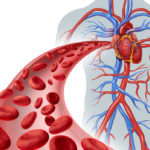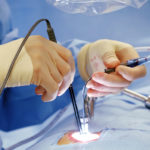The surgeon may be able to replace the aortic or mitral valve through a smaller incision. The aortic valve may be repaired or replaced through a 10 to 15-centimetre incision in the breastbone. The mitral valve may be repaired or replaced through a small incision in the left or right side between the ribs.
In some cases, minimally invasive surgery may have the advantages of faster recovery and a slightly shorter hospital stay. However, this surgery is undertaken only in certain patients. During minimally invasive valve replacement or repair, cardiopulmonary bypass is sometimes undertaken using veins in the neck and groin, and the femoral artery in the groin.
ANAESTHESIA: Heart valve surgery is performed under general anaesthesia. Anaesthetic drugs are safe with few risks, but a few people may have reactions to them. If you have had a reaction to an anaesthetic drug or any other drug, tell your anaesthetist or surgeon. Your anaesthetist will explain more about the anaesthetic best for you.
Instead of replacing a diseased heart valve, the surgeon may be able to repair it. The repair is performed only if the surgeon believes the procedure is likely to restore acceptable, long-term function. This applies more often to the mitral and tricuspid valves than to the aortic valve.
As shown in the illustrations on the following page, the mitral valve may be repaired by:
- tightening the annulus, usually by insertion of a ring or band (annuloplasty), as shown in the illustration (right)
- modifying the leaflets by removal of excess tissue, as shown in the illustration (left)
- shortening or replacing the chordae (“heart strings”).
The tricuspid valve may be repaired by tightening the annulus. Procedures on the leaflets or chordae are uncommon.
The aortic valve may be repaired by:
- splitting the cusps where they have fused
- modifying the annulus or attachment of the cusps; this can be done if the cusps are not diseased.
REPLACEMENT OF A HEART VALVE:
If a valve cannot be repaired, it has to be removed and then replaced with a valve of the appropriate size, as described above.




